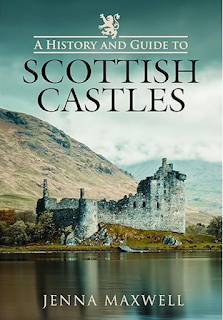Kilchurn Castle
Greetings, history enthusiasts! Let’s journey to the
northeastern end of Loch Awe in Argyll and Bute, Scotland, where Kilchurn
Castle stands as a magnificent testament to Scotland’s rich heritage. 🏰
A Glimpse into History:
Mid-15th Century: Kilchurn Castle was constructed around
1450 by Sir Colin Campbell, 1st of Glenorchy, a younger son of Duncan Campbell,
1st Lord Campbell1. The castle initially featured a five-storey tower house
with a courtyard defended by an outer wall. At the time, Kilchurn was on a
small island, accessible only by a causeway.
Late 15th Century: Sir Colin’s son, Sir Duncan Campbell of
Glenorchy, added the ‘laich hall,’ a single-storey dining hall along the inside
of the south curtain1. Sir Duncan was one of the many Scottish nobles killed at
the Battle of Flodden in 1513.
16th Century: Another Sir Colin Campbell, the 6th Laird,
further improved the castle by adding chambers to the north of the tower house
and remodelling the parapet with circular corner turrets adorned by corbels1.
He also constructed Balloch Castle (now Taymouth Castle) to consolidate the
Campbells’ territorial gains in Perthshire.
17th Century: Sir Duncan Campbell, 1st Baronet, rebuilt and
enlarged the south range of the castle in 1614, incorporating a chapel in the south-east
part of the courtyard.
1689: Sir John Campbell of Glenorchy, 1st Earl of
Breadalbane, converted Kilchurn into a garrison stronghold. The tower house was
adapted for officers’ accommodation, and a barracks for 200 men was built on
the north side of the courtyard2. This barracks block remains the oldest
surviving barracks on the British mainland.
18th Century: The castle saw little use other than as an
outpost for government soldiers during the Jacobite risings of 1715 and 1745.
By 1770, Kilchurn Castle was abandoned and fell into ruin.
Architectural Marvel: Kilchurn Castle’s strategic location
on a rocky peninsula provided a strong defensive position and stunning views of
Loch Awe. The castle’s design, with its five-storey tower house, circular
corner turrets, and extensive barracks, showcases the evolution of Scottish castle
architecture over centuries.
Strategic Location: Situated at the northeastern end of Loch
Awe, Kilchurn Castle’s location was crucial for controlling the surrounding
lands and waterways. Its position made it a valuable stronghold in Scotland’s
medieval power struggles.
Today, Kilchurn Castle stands as a scheduled monument,
offering visitors a fascinating glimpse into Scotland’s medieval past. The
ruins provide a unique insight into the lives of those who once occupied this
stronghold and the historical events that unfolded within its walls.
Have you visited Kilchurn Castle? Share your photos and experiences in the comments below!
Feel free to add any personal touches or additional
information to make this post your own!
For more of the Castles in Scotland series visit:
https://castlesinscotland.blogspot.com/
https://www.historicenvironment.scot/visit-a-place/places/kilchurn-castle/
https://www.google.com/maps/d/edit?mid=1NTTk4vGyDXVvUWaZkYuTE6X1IA9p8A8&usp=sharing
#scotlandtravel #scotlandexplore #scotland
#scotlandbymotorhome #motorhome #motorhomelife #homeiswhereyouparkit #vanlife
#vanlifeuk #searchforsites #park4night #CamperUK #motorhometouringscotland
#nc500 #northcoast500 #se250 #sw300
#ScottishHistory #ClanMaclean #HistoricScotland #ScottishHistory
#ClanMacDougall #ClanCampbell #HistoricScotland #RothesayCastle
#castlesofscotland #castlesinscotland















